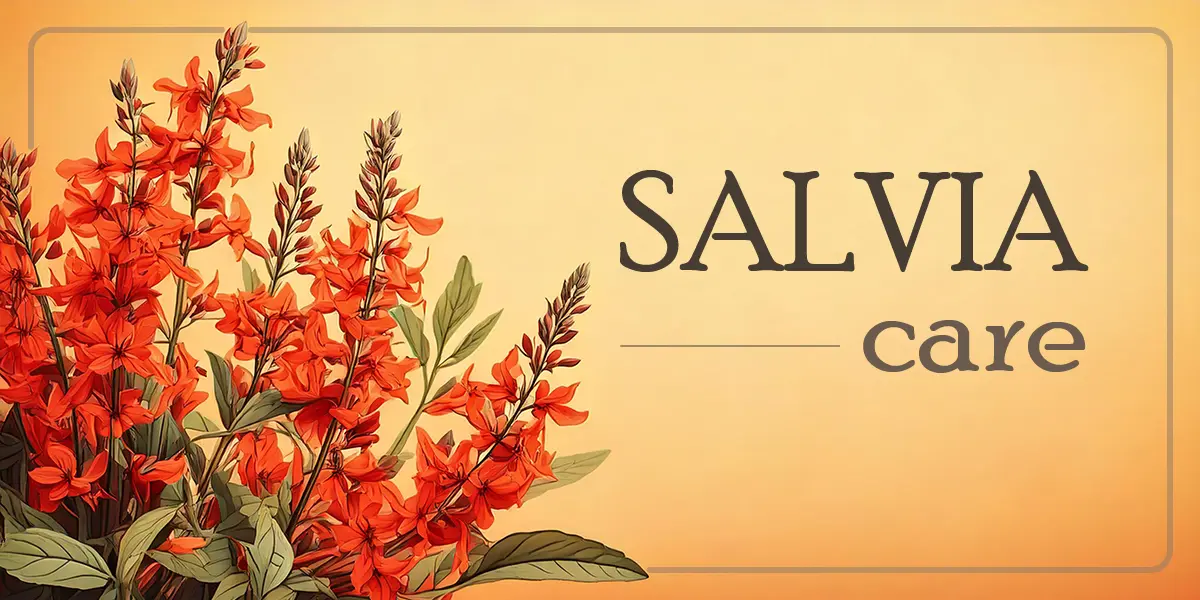Salvia is a genus of around 1,000 species, including ornamentals, wildflowers, and culinary herbs like sage. Native to the Mediterranean, Central and South America, and Asia, it has been used worldwide in traditional medicine, cooking, and cultural ceremonies. Its name originates from the Latin word “salvare,” meaning “to heal.”
Its vibrant blooms and versatile uses make it a favorite among gardeners, plant enthusiasts, and herbalists. It can treat your ailments, flavor your food, and beautify your garden. What more can you ask of a plant?
Popular varieties include:
- Salvia officinalis (Common Sage): One of the best-known culinary herbs. It has gray-green leaves and produces small purple flowers.
- Salvia coccinea (Scarlet Sage): A popular ornamental variety with bright red flowers.
- Salvia farinacea (Mealy-cup Sage): This species has blue-purple flowers and is drought-tolerant.
- Salvia splendens (Scarlet Sage): Another ornamental variety with bright red flowers that attract pollinators like hummingbirds and butterflies.
- Salvia divinorum (Diviner’s Sage): A psychoactive plant with hallucinogenic properties.
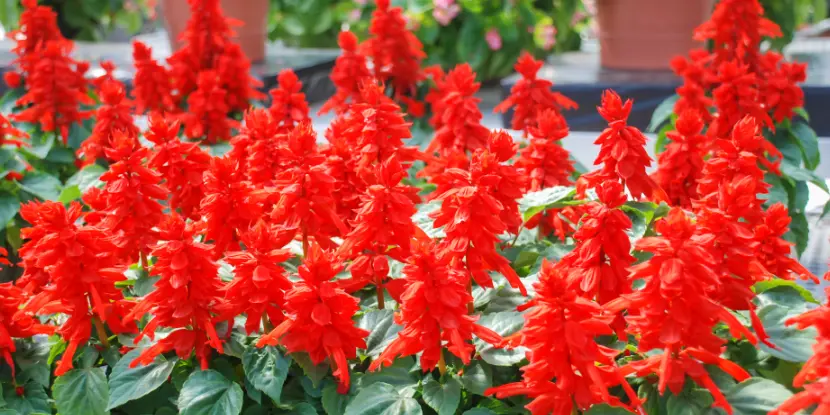
Salvia splendens is a showy, ornamental variety of sage.
Ideal Growing Conditions for Salvia
Light
- Provide at least 6–8 hours of direct sunlight daily for optimal growth.
- For varieties that tolerate partial shade, 4–6 hours of sunlight should suffice, but with reduced flowering potential.
- If salvia is growing indoors, place it near a sunny window. Supplement natural light with a grow lamp, if necessary.
Soil
- The soil should be well-draining and slightly acidic, with a pH between 6 and 7.
- Add organic matter like compost or peat moss to improve soil quality.
- Avoid planting in heavy clay soil, which can lead to root rot.
Temperature
- Most varieties prefer warm temperatures, around 65–85°F (18–29°C).
- Some cold-hardy species, like Salvia coccinea and Salvia elegans, can tolerate lower temperatures but may require protection from frost.
- If growing salvia in a colder climate, plant it in a sheltered area or mulch around the base to protect it from harsh weather.
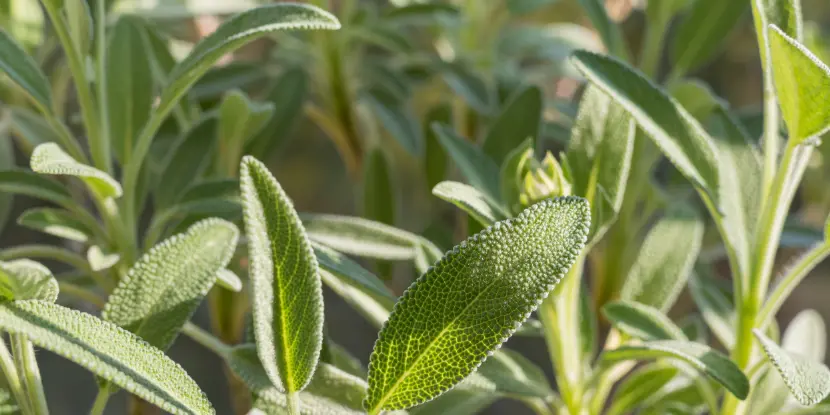
Salvia officinalis leaves ready for harvest.
Propagating Salvia
- Seeds: Can be sown indoors in late winter or early spring. Germination takes around 2 weeks at 65–75°F (18–24°C).
- Cuttings: In the summer, take 3–4 inch softwood cuttings and root them in moist potting soil.
- Division: Divide established plants every few years to maintain their vigor.
Planting Salvia
- Plant salvia in spring after the last frost or in early fall to allow roots to establish before winter.
- Pick a sunny area with good airflow to prevent fungal issues.
- Loosen the soil to a depth of 12 inches.
- Mix in compost or organic matter to boost fertility.
- Dig holes twice as wide as the root ball and space them 12–24 inches apart, depending on the variety.
- Place the plant in the hole and backfill it with soil, pressing it down gently to remove air pockets.
- Water thoroughly after planting to help roots settle.
Salvia Care
Water
- Salvia is drought-tolerant once established.
- Water young plants regularly until they develop a strong root system.
- Allow the soil to dry between watering, but don’t let it become bone dry.
- Overwatering can lead to root rot and other fungal diseases.
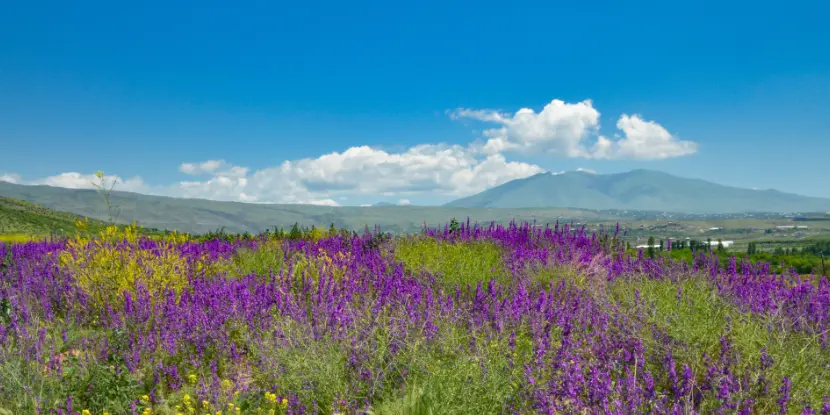
A mountain meadow with purple sage flowers.
Fertilizer
- Salvia doesn’t require much fertilization if grown in nutrient-rich soil.
- Apply a balanced fertilizer, like 10-10-10, in early spring to promote growth and flowering.
- For potted salvia, feed every 4–6 weeks during the growing season.
- Avoid overfertilizing, as it can result in leggy growth and reduced blooming potential.
Pests & Diseases
- Pests: Common issues include aphids, spider mites, and whiteflies. Treat them with neem oil or insecticidal soap.
- Diseases: Ensure good drainage and airflow to prevent fungal diseases like powdery mildew. Water at the soil level rather than on the leaves.
Pruning
- Prune salvia after its first flush of flowers to encourage reblooming and maintain its shape.
- Cut back spent flower spikes to the nearest leaf or node.
- In late fall, prune back to 6 inches above ground level before winter sets in.
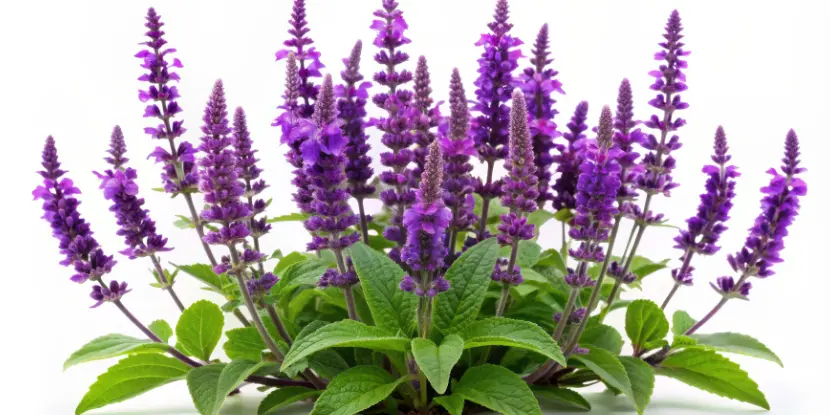
Purple Sage flowers in bloom.
Harvesting & Using Salvia
Culinary Uses
- Sage is an essential herb in Mediterranean cuisine. Use it fresh or dried in pasta, soups, and meat rubs.
- The flavor intensifies when dried, so use half the amount of dried sage compared to fresh in recipes.
Medicinal Uses
- Sage can soothe sore throats, relieve menstrual cramps, and improve digestion.
- Make tea by steeping fresh or dried leaves in hot water.
- Use it topically to soothe insect bites and minor skin irritations.
Preserving Salvia
- Hang bundles of salvia upside down in a dry, well-ventilated area to dry.
- Once thoroughly dried, store the leaves in an airtight container and use within 6 months for maximum flavor.

Some salvia varieties can be brewed into tea.
FAQs: Salvia Care
Q: How often should salvia be pruned?
Prune in late winter or early spring to remove dead stems and encourage new growth. Lightly deadhead spent blooms during the growing season to promote continuous flowering.
Q: Can salvia grow in containers?
Choose a container with good drainage, and use well-draining soil. Container salvia may require more frequent watering and feeding.
Q: How long does salvia bloom?
Many salvia varieties bloom from late spring through fall, especially with regular deadheading.
Q: Can salvia attract pollinators?
Salvia’s vibrant flowers and sweet nectar are especially appealing to beneficial organisms, making it a great addition to pollinator-friendly gardens.
Q: How do I prevent salvia plants from becoming leggy?
Ensure your salvia gets plenty of sunlight and avoid overfertilizing. Regular pruning and deadheading will also encourage a bushier plant with consistent blooming.
Q: What should I do if salvia stops blooming?
Deadhead spent flowers. Also, too much shade can hinder flowering. If the plant appears nutrient-deficient, fertilize sparingly with a balanced fertilizer.
Q: Can salvia survive winter outdoors?
Hardiness depends on the variety, but some types, like Salvia nemorosa and Salvia elegans, can survive mild winters in the ground. For less hardy varieties, consider mulching for insulation or planting them in pots so they can be moved indoors to overwinter.

